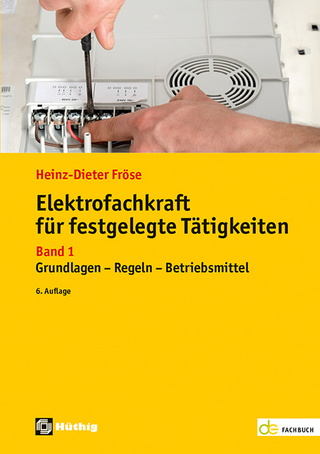
Petroleum Geology of Libya
Elsevier Science Ltd (Verlag)
978-0-444-50525-5 (ISBN)
- Titel erscheint in neuer Auflage
- Artikel merken
Libya has the largest petroleum reserves of any country in Africa and since production began in 1961 over 20 billion barrels of oil have been produced. Libya is scheduled to reach the mid-point of depletion of reserves in 2001 and this provides a timely point at which to review the state of petroleum exploration in Libya.A large amount of data has been published on the geology of Libya, but it is scattered through the literature; much of the older data has been superceded, and several of the key publications, especially those published in Libya, are difficult to find. This book represents the first attempt to produce a comprehensive synthesis of the petroleum geology of Libya. It is based exclusively on published data, supplemented by the author's experience gained during ten years work in Libya. The aim of the book is to systematically review the plate tectonics, structural evolution, stratigraphy, geochemistry, and petroleum systems of Libya, and provides valuable new data on fields, production, and reserves. This volume will provide a ready source of reference to individuals and companies who wish to obtain an overview of the petroleum geology of Libya, and will save them the laborious task of sifting through hundreds of publications to find the data they require. The book includes 148 newly drawn figures.
Don Hallett obtained his B.Sc degree in geology from Durham University and his doctorate from University College London. He worked for Esso Exploration Inc. in UK, Morocco and Senegal, and as Area Exploration Manager for Sonatrach in Algeria. He then worked for BNOC on North Sea exploration and was Chief Geologist of its privatised successor Britoil. Dr Hallett then joined Sirte Oil Company and spent ten years in Libya, reaching the position of Exploration Superintendent. Since 1999 he has worked as a consultant, advising companies and conducting workshops in several countries, and producing the first edition of Petroleum Geology of Libya in 2002. In 2005 he became an associate of Nubian Consulting Ltd providing clients with evaluations and advice on Libyan opportunities. He was also joint author of a report on Libyan oil and gas reserves and an atlas of Libyan oil and gas fields.
List of figures. Preface. Notes and definitions. 1. History of Libyan oil exploration and production.1.1 Before independence. 1.2 The fledgling Libyan oil industry. 1.3 Exploration activity, 1956-1958. 1.4 Bonanza, 1959-1961. 1.5 Events leading to the Petroleum Law of 1965. 1.6 Exploration and production activity, 1962-2965. 1.7 New concession awards and joint ventures, 1966-1969.1.8 Exploration and production, 1966-1969. 1.9 The revolution and its aftermath, 1969-1974. 1.10 The decline in exploration activity, 1969-1974. 1.11 EPSA I, 1974. 1.12 Consolidation, 1975-1979. 1.13 Turmoil, 1979-1986. 1.14 EPSA II and new discoveries, 1979-1986. 1.15 Sanctions and EPSA III, 1986-1999. 1.16 Reserves. 1.17 Natural Gas. 1.18 Summary. 2. Plate tectonic history of Libya.2.1 Introduction.2.2 Rodinia.2.3 The break-up of Rodinia.2.4 The Pan-African orogeny and the assembly of Gondwana.2.5 Gondwana during the Palaeozoic.2.6 Pangaea.2.7 Tethys.2.8 The development of Tethys.2.9 Tethys to Mediterranean.3. Stratigraphy: precambrian and palaeozoic.3.1 The development of Libyan stratigraphy. 3.2 Archaean and proterozoic, palaeozoic. 3.3 Cambro-Ordovician. 3.4 Silurian. 3.5 Devonian. 3.6 Carboniferous. 3.7 Permian. 4. Stratigraphy: mesozoic.4.1 Triassic.4.2 Jurassic.4.3 Lower cretaceous.4.4 Upper cretaceous.5. Stratigraphy: cainozoic.5.1 Palaeocene, West Libya.5.2 Eocene, Western outcrops. 5.3 Oligocene, Western outcrops. 5.4 Miocene, Coastal Plain. 5.5 Pliocene and quaternary. 6. Structure. 6.1 Southern Libya. 6.2 Western Libya. 6.3 Sirt Basin. 6.4 Cyrenaica. 6.5 Offshore. 6.6 Structural synthesis. 6.7 Summary. 7. Petroleum geochemistry. 7.1 Introduction. 7.2 Al Kufrah Basin. 7.3 Murzuq Basin. 7.4 Ghadamis Basin. 7.5 Sirt Basin.7.6 Cyrenaica. 7.7 Offshore. 8. Petroleum systems.8.1 Introduction.8.2 Murzuq Basin.8.3 Ghadamis Basin.8.4 Sirt Basin.8.5 Offshore.9. Postscript: where are the remaining undiscovered reserves?9.1 Introduction.9.2 Yet-to-find.9.3 Al Kufrah Basin.9.4 Murzuq Basin.9.5 Ghadamis Basin.9.6 Western Sirt Basin.9.7 Maradah Trough.9.8 Western Ajdabiya trough.9.9 Eastern Ajdabiya trough. 9.10 Eastern Sirt embayment. 9.11 Cyrenaica. 9.12 Offshore. Notes. References.Appendix: glossary of geographic names. Index.
| Erscheint lt. Verlag | 26.2.2002 |
|---|---|
| Verlagsort | Oxford |
| Sprache | englisch |
| Maße | 184 x 260 mm |
| Gewicht | 1320 g |
| Themenwelt | Technik ► Elektrotechnik / Energietechnik |
| ISBN-10 | 0-444-50525-3 / 0444505253 |
| ISBN-13 | 978-0-444-50525-5 / 9780444505255 |
| Zustand | Neuware |
| Haben Sie eine Frage zum Produkt? |
aus dem Bereich



